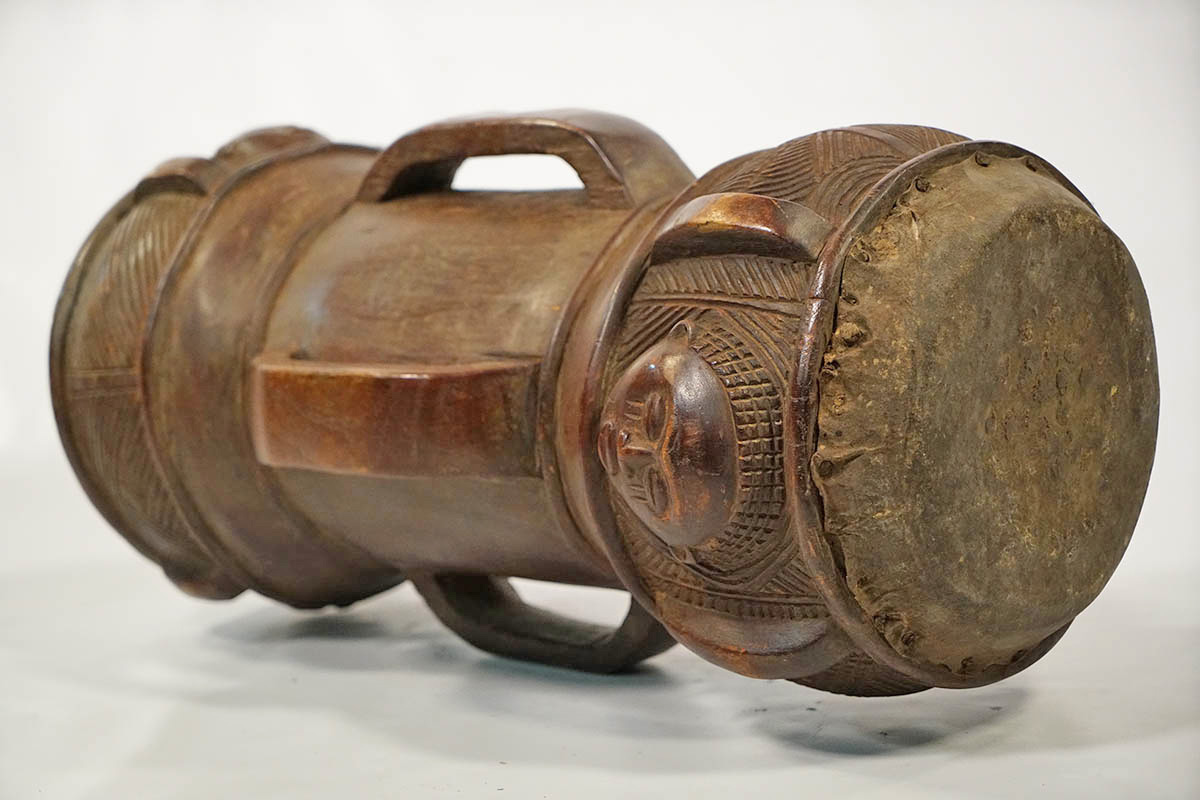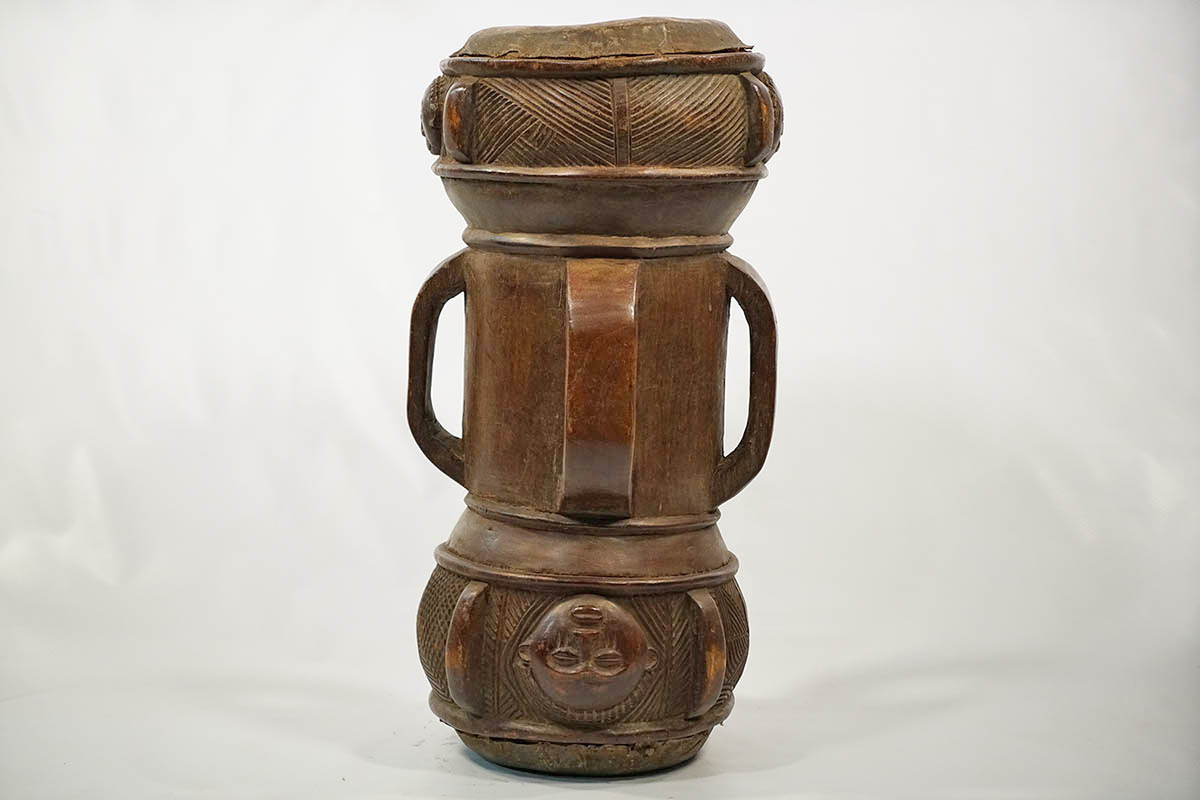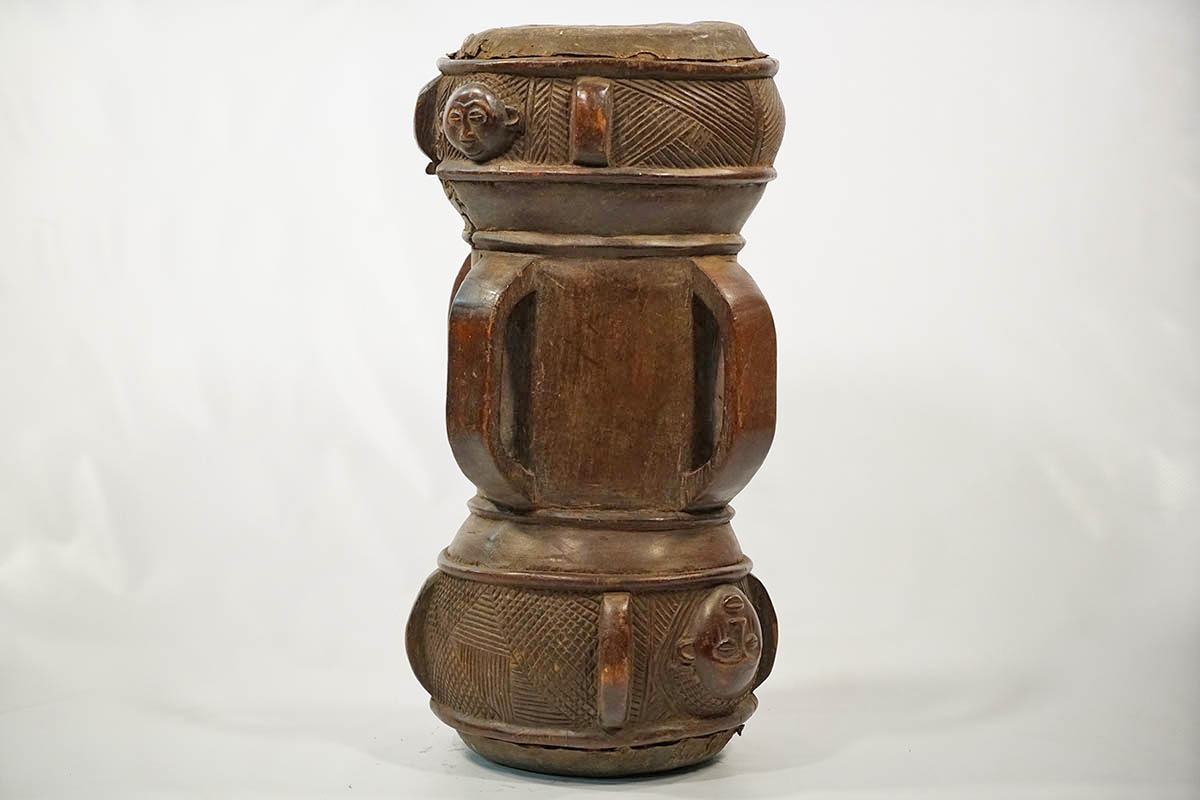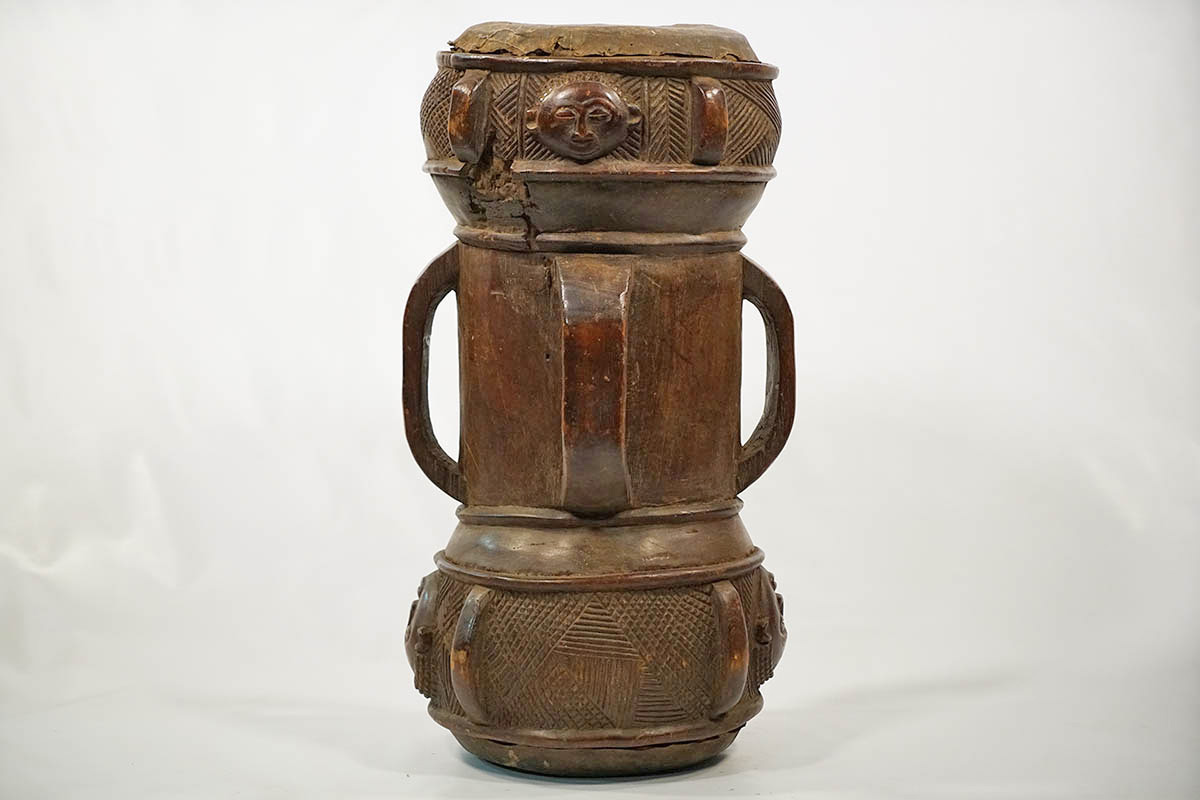This incredible hand carved double-sided drum from the Luba people of DRC has incredible detail throughout the entire piece. It features multiple cross hatched designs, and several Luba human faces carved into the drum. It stands 29.5 inches tall and weighs 30 pounds.
Hand Carved Double-Sided Luba Drum 29.5″ – DRC – African Art
$875.00
Sold

| Type of Object | Figural Drum |
|---|---|
| Country of Origin | DR Congo |
| Ethnicity | Luba |
| Material | Wood, pigment, leather |
| Approximate Age | Unknown |
| Height (Inches) | 29.5" |
| Width (Inches) | 16" |
| Depth (Inches) | 15" |
| Weight (Pounds/ Ounces) | 30 lbs |
| Overall Condition | Possible minor imperfections and wear & tear, including but not limited to scuffing, cracking and minimal chipping. Possible previous repairs. See photos or inquire for more details. |
Tribe Information
About the Luba People
“The Luba empire was founded in 1585 in the Upemba depression by King Kongolo. His nephew and successor, Kalala Ilunga, rapidly expanded the kingdom to encompass all the territories on the upper left bank of the Lualaba River. At its peak, about one million people, living in several tribes, were paying tribute to the Luba king. At the end of the 19th century, with the advance of the Ovimbudu people from Angola and the raids of the East African Muslim slavers, the empire weakened and, in fact, collapsed when Belgian colonials took control.
With the Assistance of a court of notables, called Bamfumus, the king, known as the Mulopwe, reigned over his subjects through clan kings called Balopwe/ These clan kings could symbolically become the Mulapwe’s son which created client states throughout the empire. A secret society, Bambudye, kept the memory of the Luba empire alive and permeated throughout Luba territory, bonding the diverse populations together. The Luba empire economy was complex – it was based on a tribute system and the redistribution of resources from agriculture, fishing, hunting and mining. The production of salt and iron was under the king’s control.”
Source:
Baquart, Jean-Baptiste. The Tribal Arts of Africa. New York: Thames and Hudson Inc. 1998. Print.










